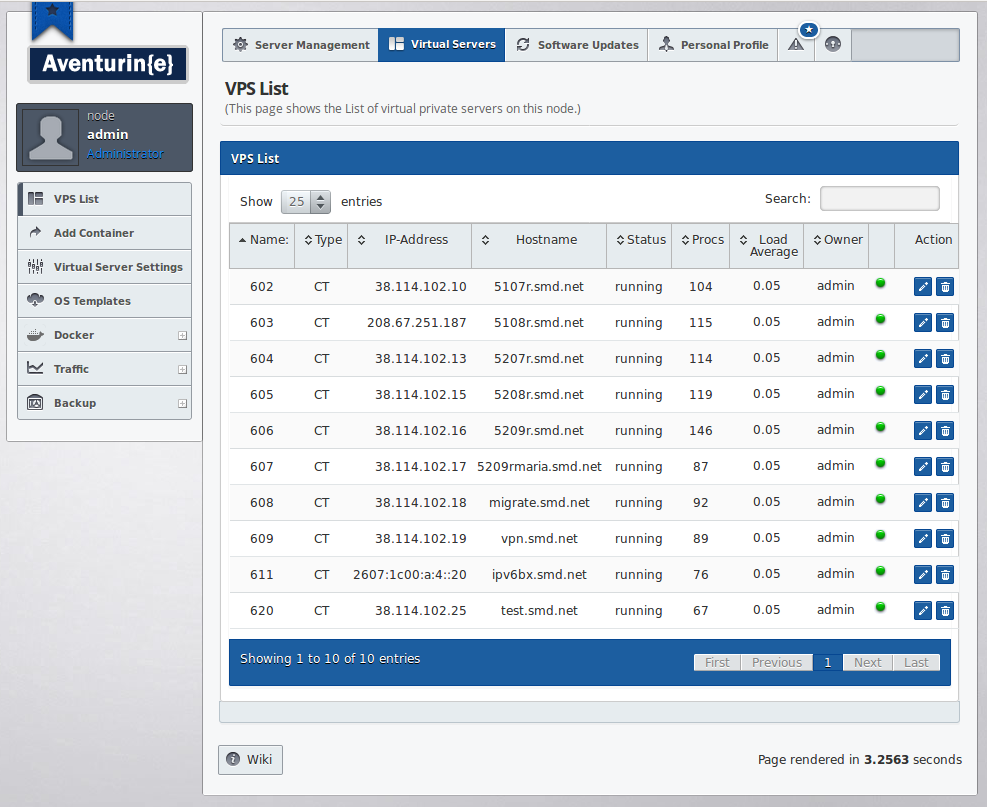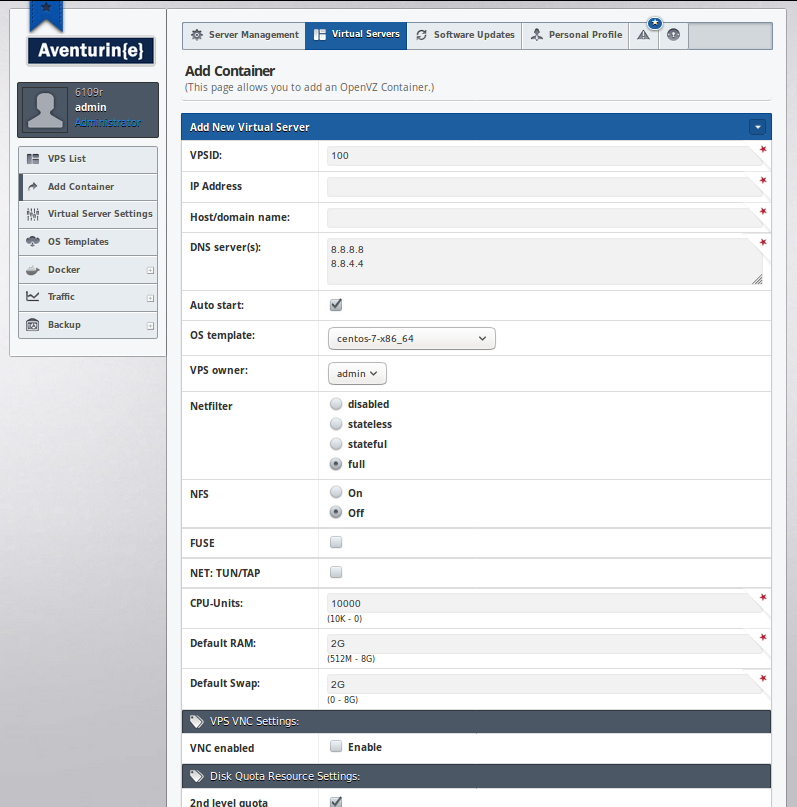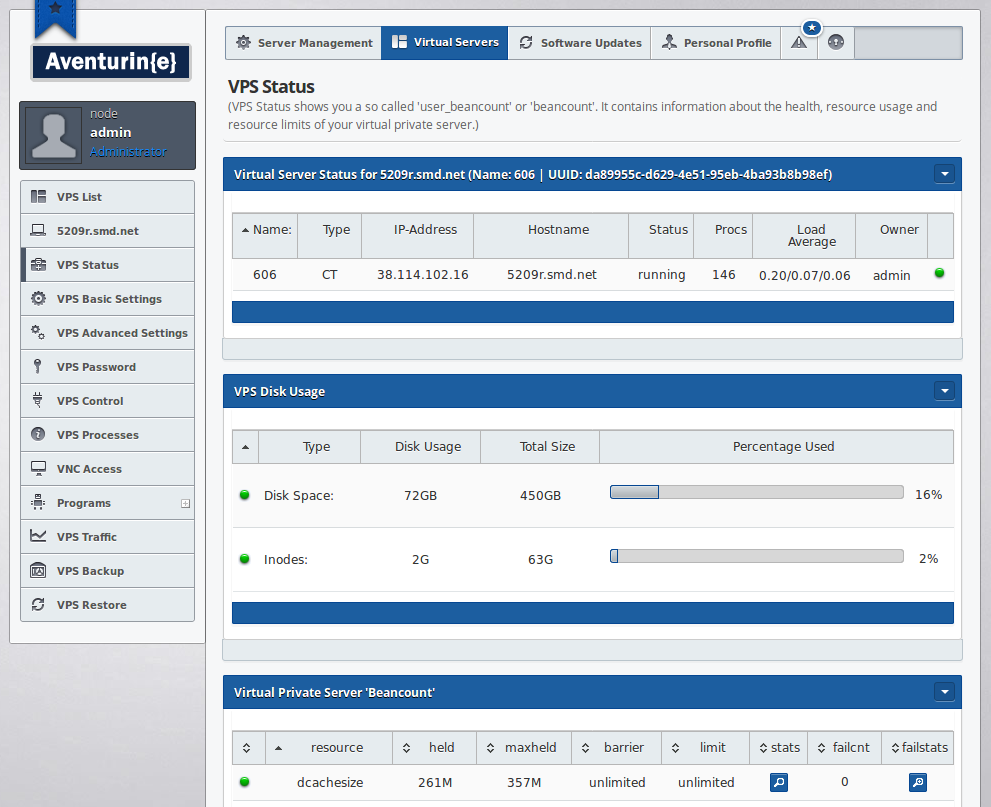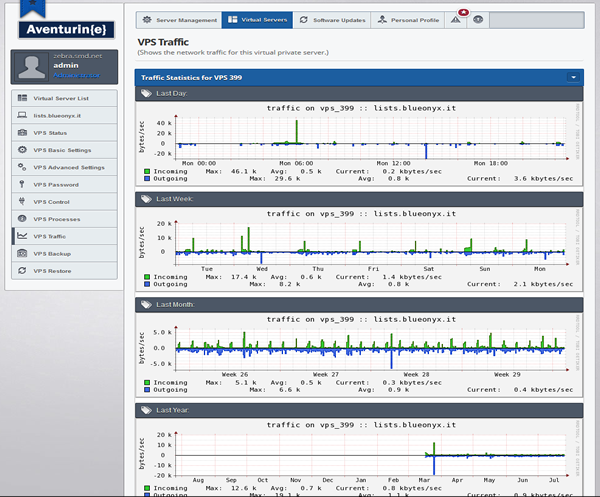VPS Management
Preface
Aventurin{e} 6109R is designed to complement the shell tools of OpenVZ 7. Every VPS related transaction the GUI performs is done via the OpenVZ 7 shell tools such as prlctl, vzctl, vzlist, vzpkg and so on. One of the design goals of the GUI was to not get into the way of OpenVZ management, but to complement it. If there is something the GUI can't do, but you can do it from the shell via the OpenVZ tools? Don't hesitate to do it. The GUI will not undo or interfere with what you have done.
The Aventurin{e} GUI has a CODB backend database into which it stores GUI settings, service states and configurational parameters. But as far as OpenVZ CTs and VMs go, it stores very little information because it doesn't have to. CT and VM states are always being polled on the fly via prlctl, vzctl, config file parsing and XML file parsing. The only CT and VM related info the GUI really needs is the info if a VPS is included in the local and/or remote backup schedule.
Therefore you can manually move, migrate, create or destroy VPS's from the command line as much as you like and the GUI won't mind. If you can see a VPS, then the GUI can see it as well. You perhaps might want to take a look at the OpenVZ 7 documentation which explains a lot of basic and advanced shell based management options for OpenVZ 7.
Container (CT) or Virtual Machine (VM)
OpenVZ 7 offers both Container (CT) based VPS's as well as running of VMs via Qemu. Aventurin{e} 6109R lays its primary focus on Containers, because for us and our traditional clients these offer the best incentive, best utilization of existing hardware and all around "best bang for the bucks".
OS Templates
Containers can run Linux based OS's. These guest OS's are installed through so called "OS templates". Back on OpenVZ 6 and Aventurin{e} 6108R these OS templates were rather static. On 6109R and OpenVZ 7 OS templates are created on the fly via config files and tools that pull the latest sources off the designated package repositories. That way you always get reasonably up to date (if not fully current) guest OS's installed of such OS templates.
Aventurin{e} 6109R comes with a number of OS templates already pre-installed. These of course include our BlueOnyx 5207R, 5208R and 5209R, but also stock CentOS 6, CentOS 7 and some flavors of Debian and Ubuntu, as you can see in the screenshot below.
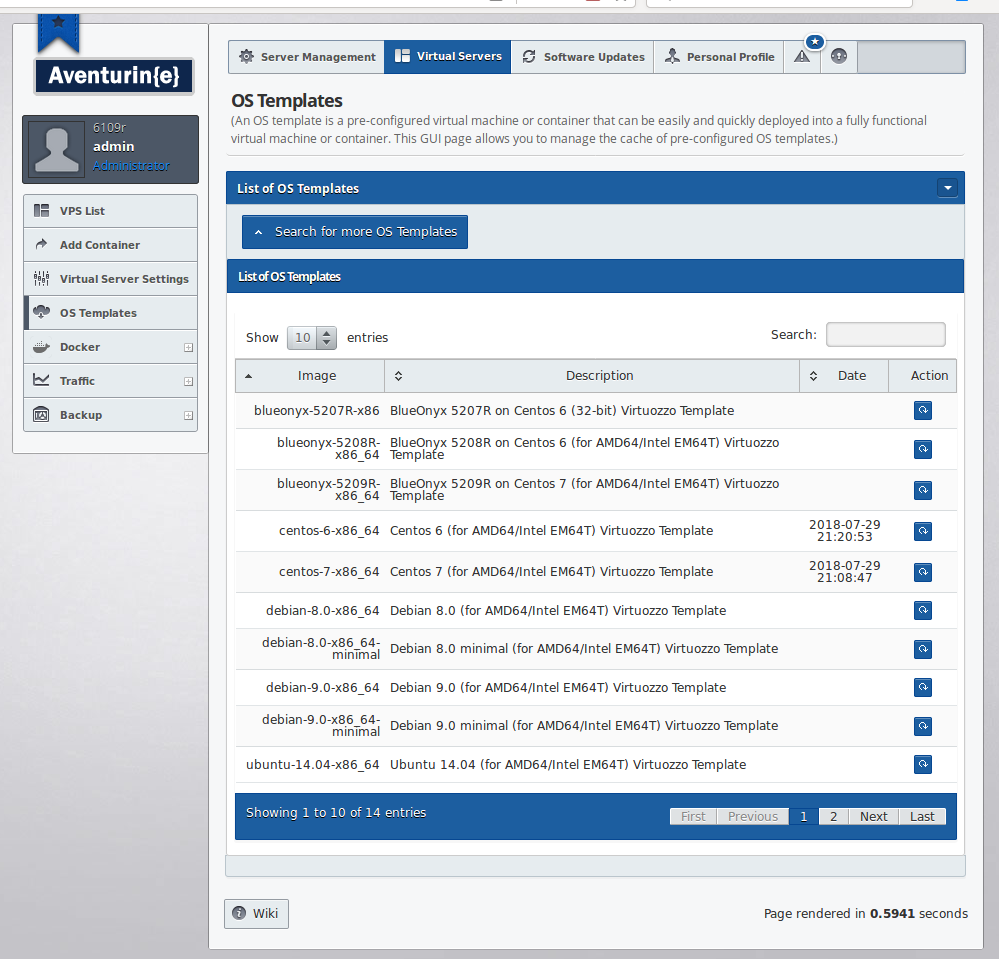
Of note should be the date column. As you can see here: The CentOS 6 and CentOS 7 entries have a date and timestamp. This means: The OS templates for both have last been updated at the date and times listed. So building a new CT from these cached OS template sources will be rather fast, as most of the data has already been cached and the cache may just need a few more updates.
If you try to install a CT from an OS template whose data has not yet been cached (to some extend or other), then the deployment of that CT will take quite some time. Hence it is a good idea to update the template cache from time to time to speed up the deployment. You can do so by clicking on the small button in the "Action" column of this page.
Additional OS templates
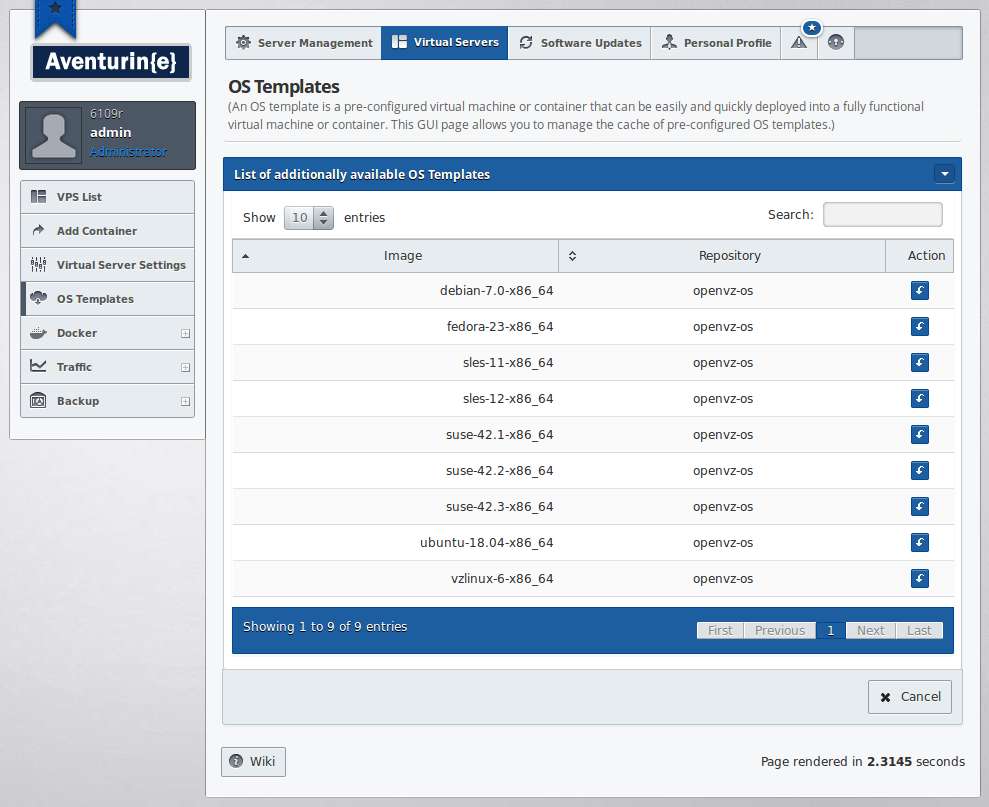
There are a few more OS template provisions that can be downloaded on this additional GUI page in case you want to try them out.
Virtual Server Settings Defaults
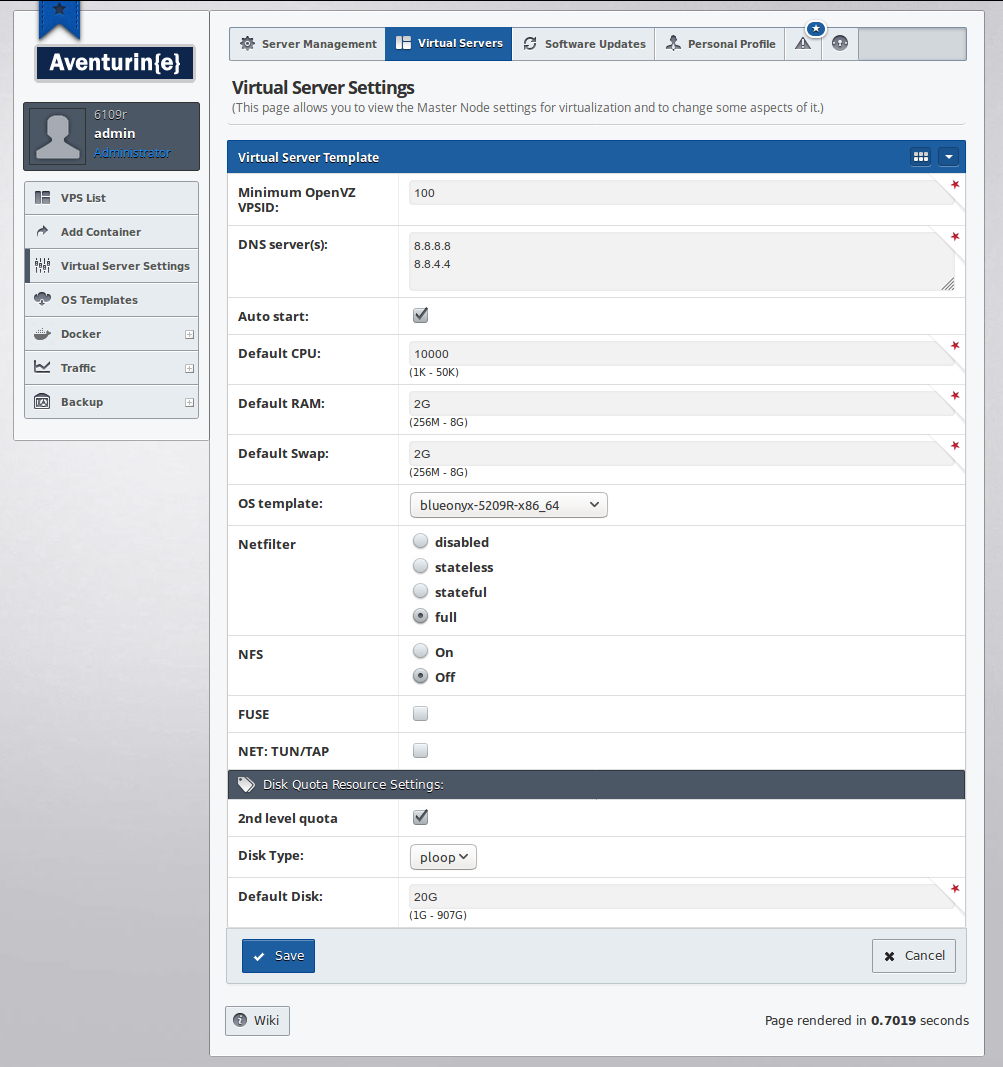
If you create many VPS's, then it can sometimes be boring to enter the same information every time. This GUI page allows you to define defaults that are used whenever you create a new VPS.
Add Container
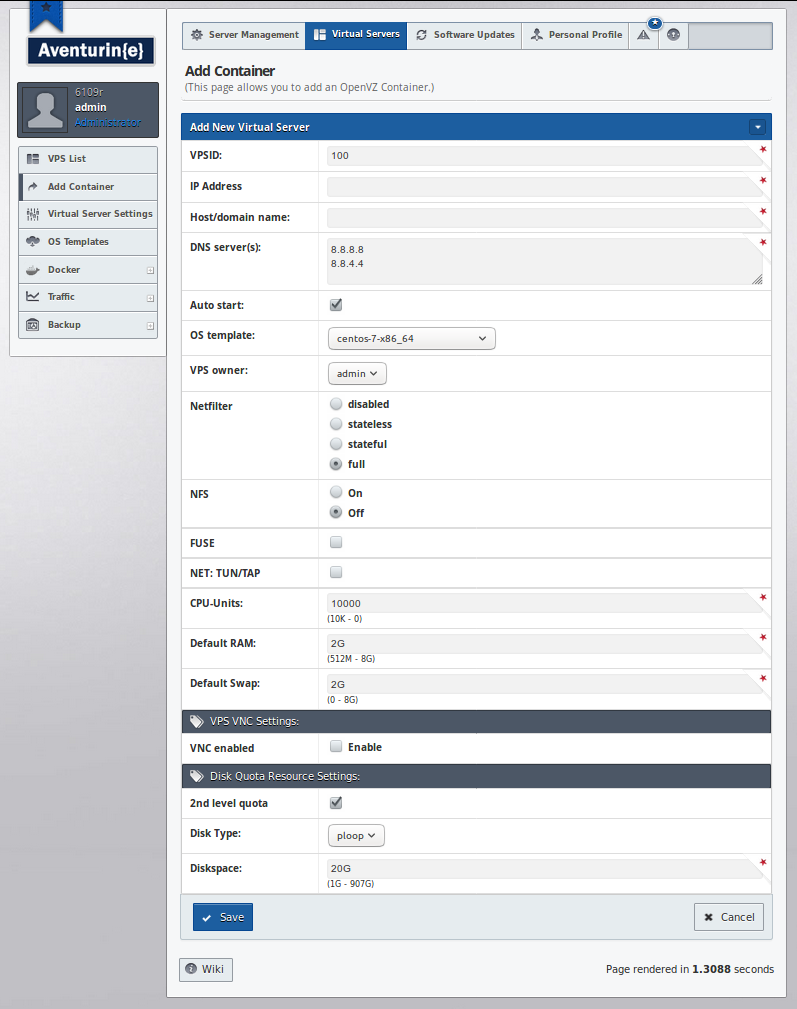
This GUI page allows you to create a new Container. Just fill in the blanks such as IP address, Hostname, choose the OS template you want to use and adjust RAM, Swap, Diskspace and other basic features to your liking.
The creation of the Container may take several minutes and the speed of that largely depends on how recent the OS template cache of the desired OS template is and how current the data within already is. If you install a BlueOnyx 5209R into it without ever having updated the cache of that OS template, then it takes as long as YUM needs to download 1400 RPMs in order to build that template.
Once the VPS has been created, the GUI will return you to the Virtual Server List, where you will be able to see your newly created Container.
Container Management
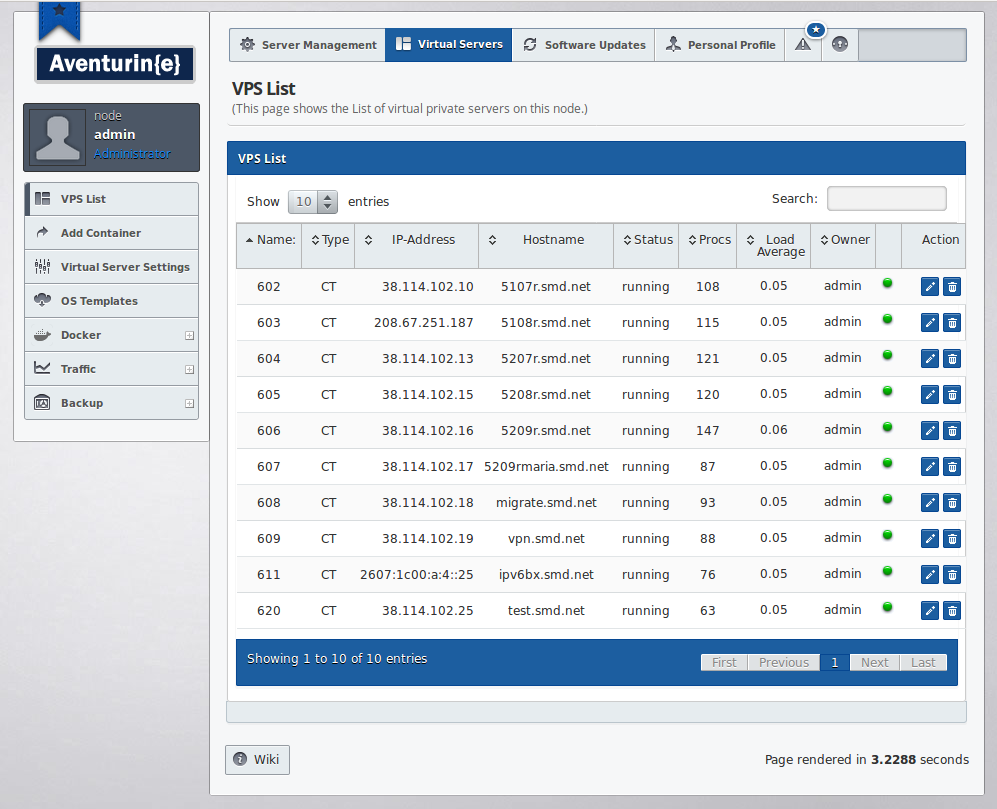
The Virtual Server List gives you a general oversight over the VPS's that are present on your 6109R node. It tells you the type of VPS (CT or VM), it's IP address, hostname, state, number of running processes, its load average, ownership and gives an indication about the health of the VPS.
The pen icon allows you to inspect and edit a VPS, while the trashcan icon allows you to delete a VPS. But don't worry: It'll ask for confirmation, so an accidental slip of the mouse or fat fingers won't endanger your rare VPS population.
VPS Status
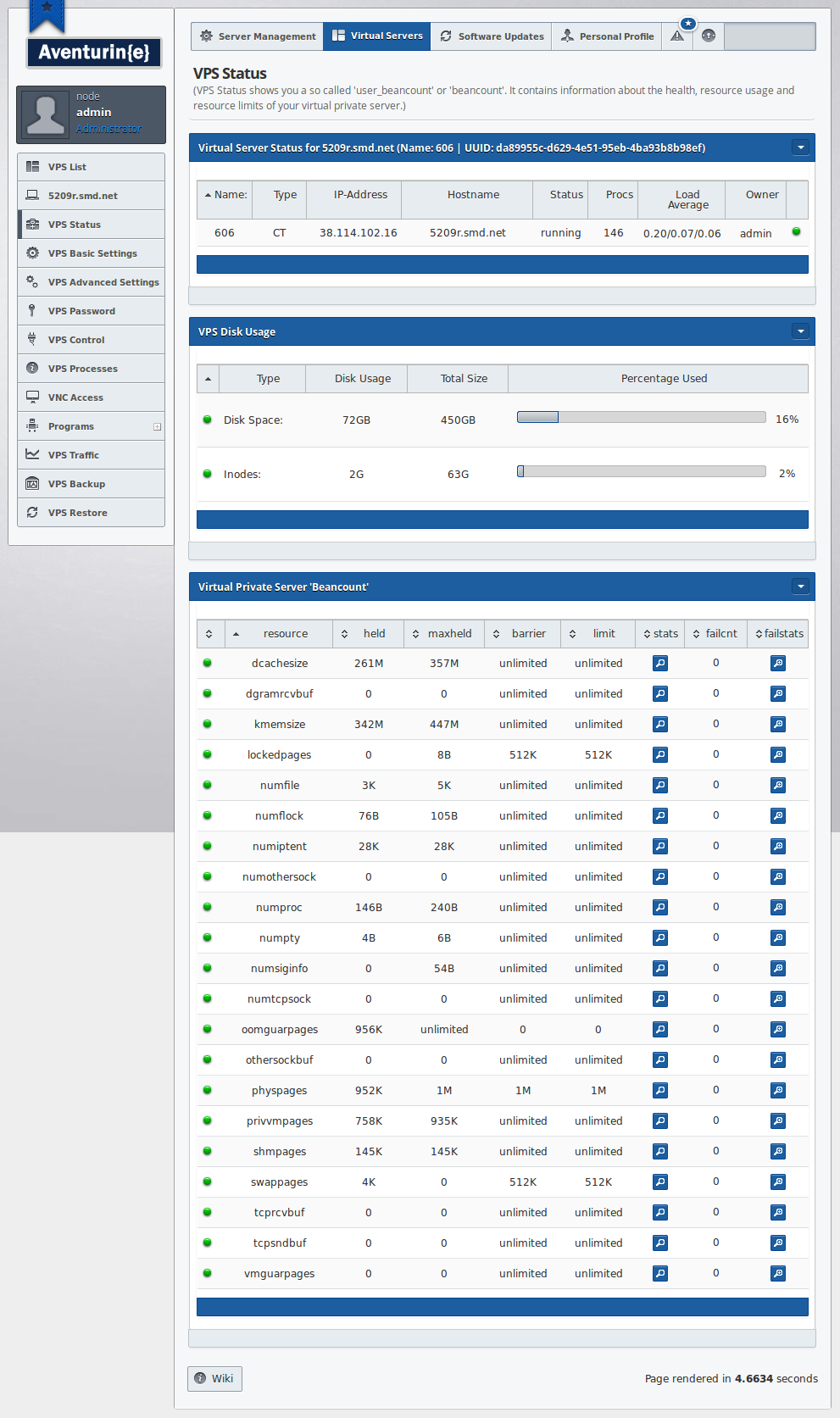
When you click on the pen icon of a Container in the Virtual Server List you land on the "VPS Status" page of the Container management. That GUI page shows you a detailed overview over the health of your Container. Including disk space usage, inode usage as well as the results from the OpenVZ "beancount" status.
When you click on the small magnifying glass icons you will see a graphic that represents a trend of the parameter and its failcount for the last day, week, month and year. This allows you to see at a glance if your provisioned VPS parameters are sufficient for coping with the demands of said VPS.
VPS Basic Settings
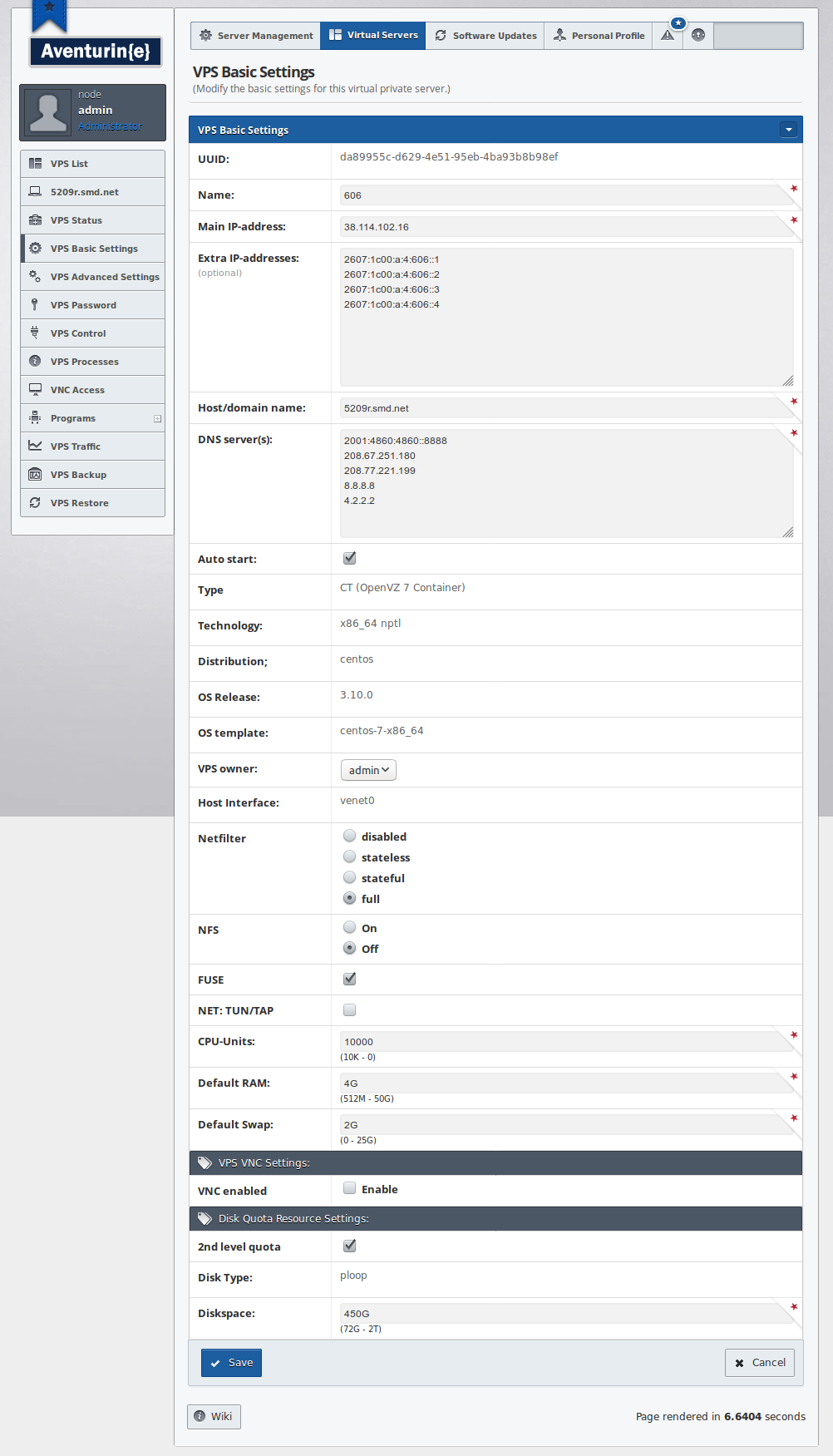
The VPS Basic Settings allow you to adjust the most common VPS settings on the fly. Such as assigning IPs, hostname, DNS, RAM, Swap, 2nd level disk quota and of course disk space.
VPS Advanced Settings
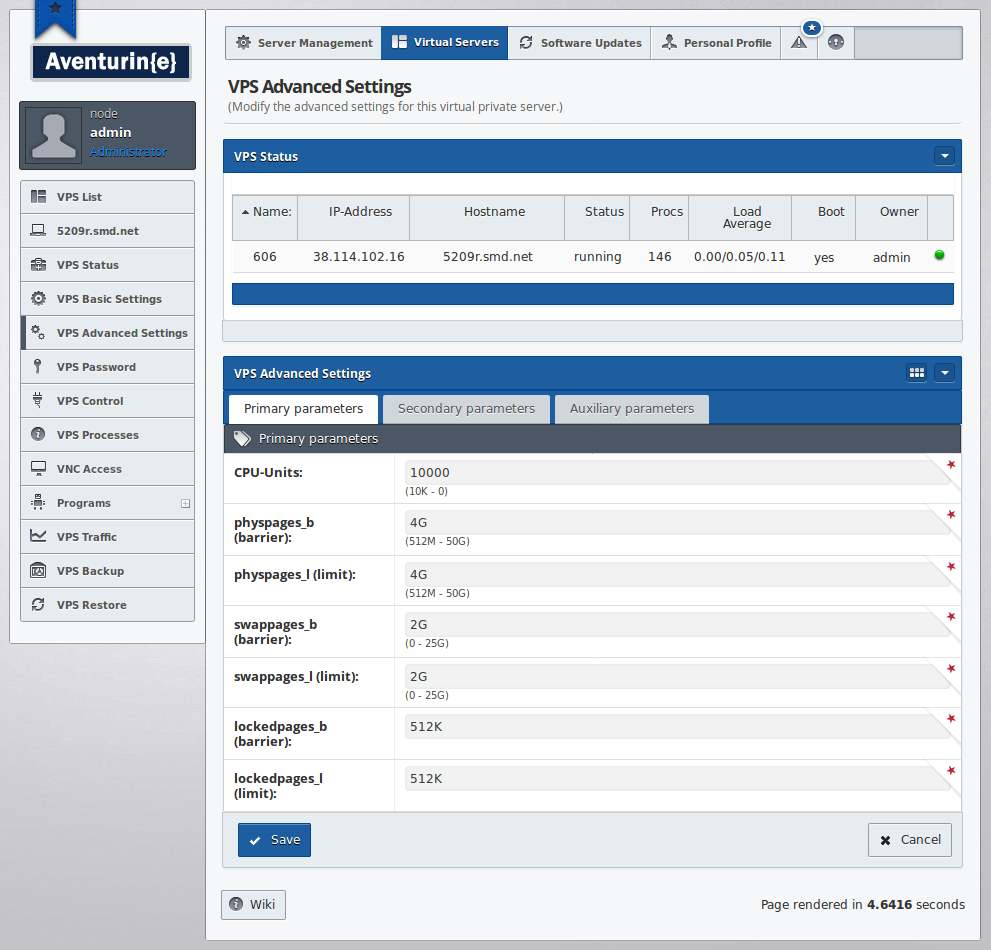
The VPS Advanced Settings allows you to go really down to the nuts and bolts of Container virtualization. Need to limit how many processes, terminals or IP connections this container may handle at the same time? Then this is the page where you can tweak that. For ease of management most parameters not dealing with RAM or Swap are set to "Unlimited" by default.
VPS Password
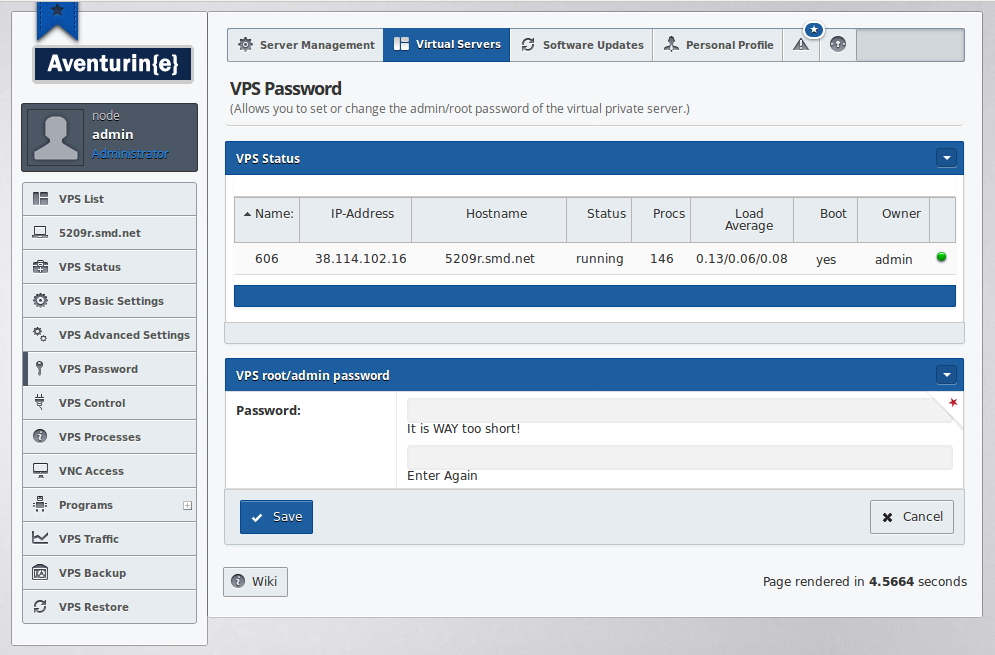
This GUI page allows you to set or change the VPS's "root" and "admin" passwords at the same time. Of course: If there is no "admin" account, none will be created. The provision to change the "admin" password as well is specifically useful for BlueOnyx VPS's, where both accounts are present for administrative reasons.
VPS Control
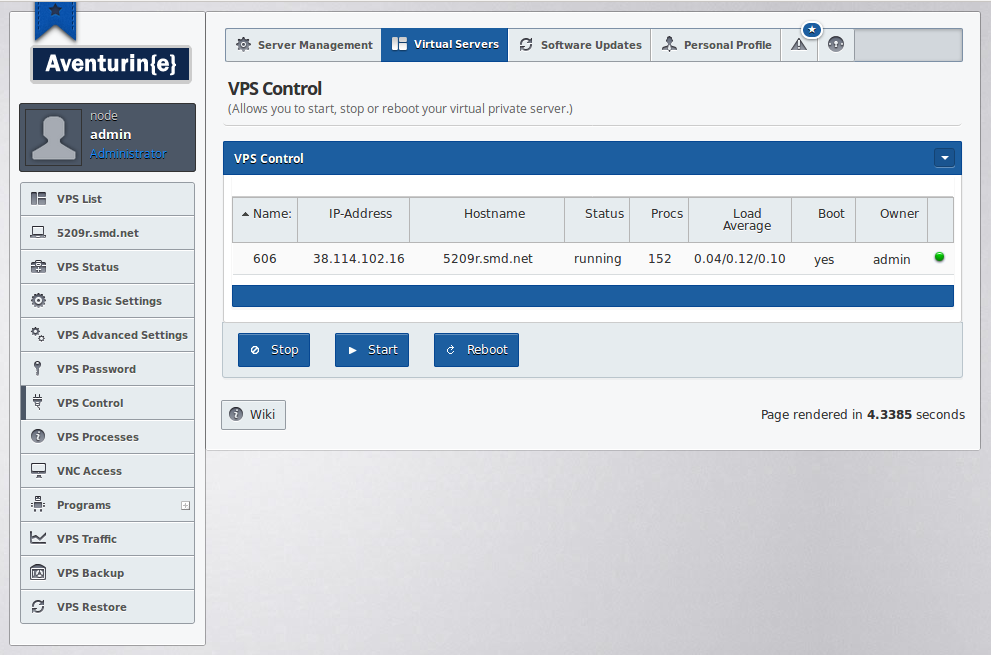
On this page you can stop, start or reboot a VPS.
VPS Processes
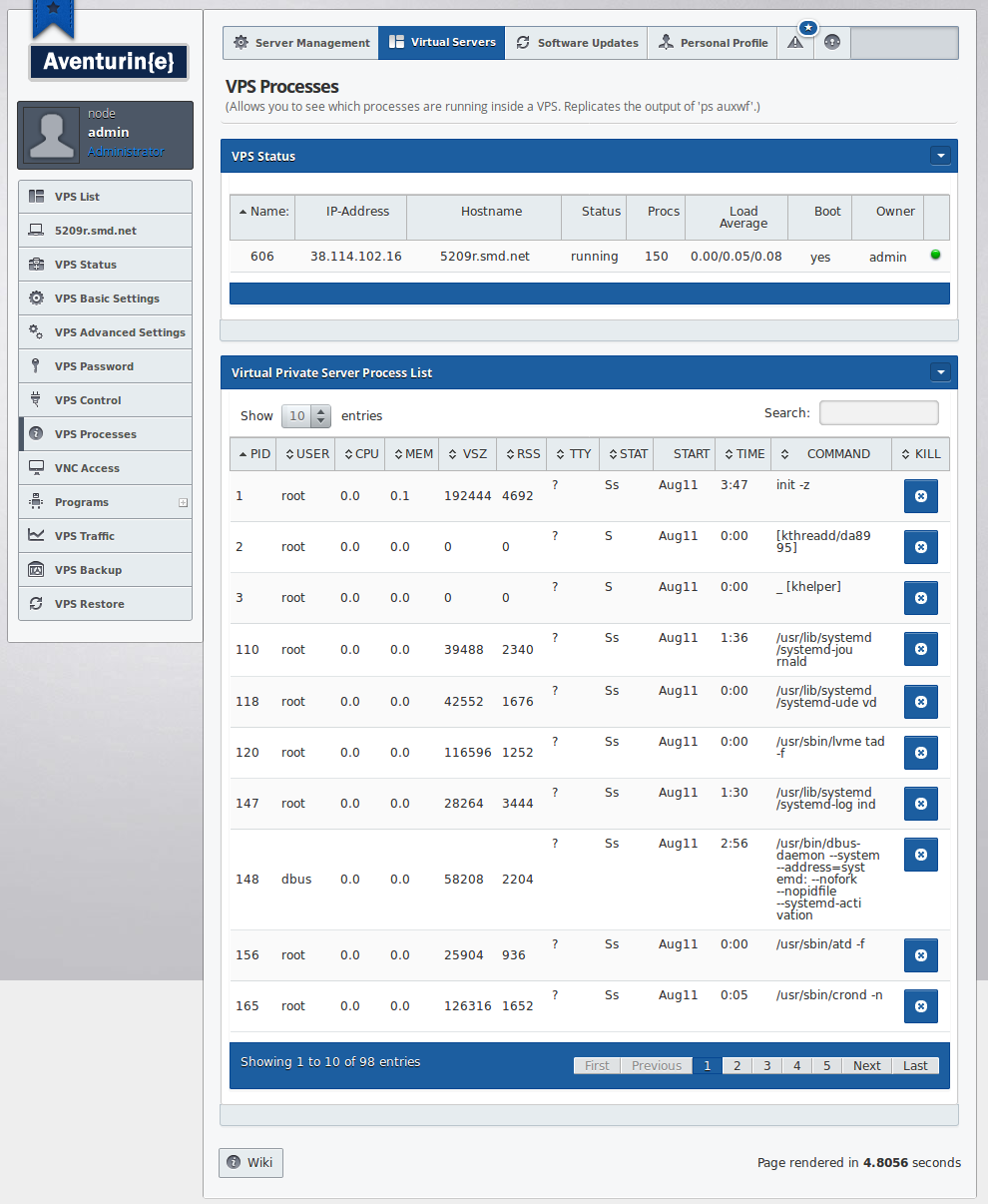
This page shows all processes running inside this VPS and you can sort and search the process list for items of interest. The buttons with the X allow you to terminate (with "kill -9 <PID>") selected processes.
VNC Access
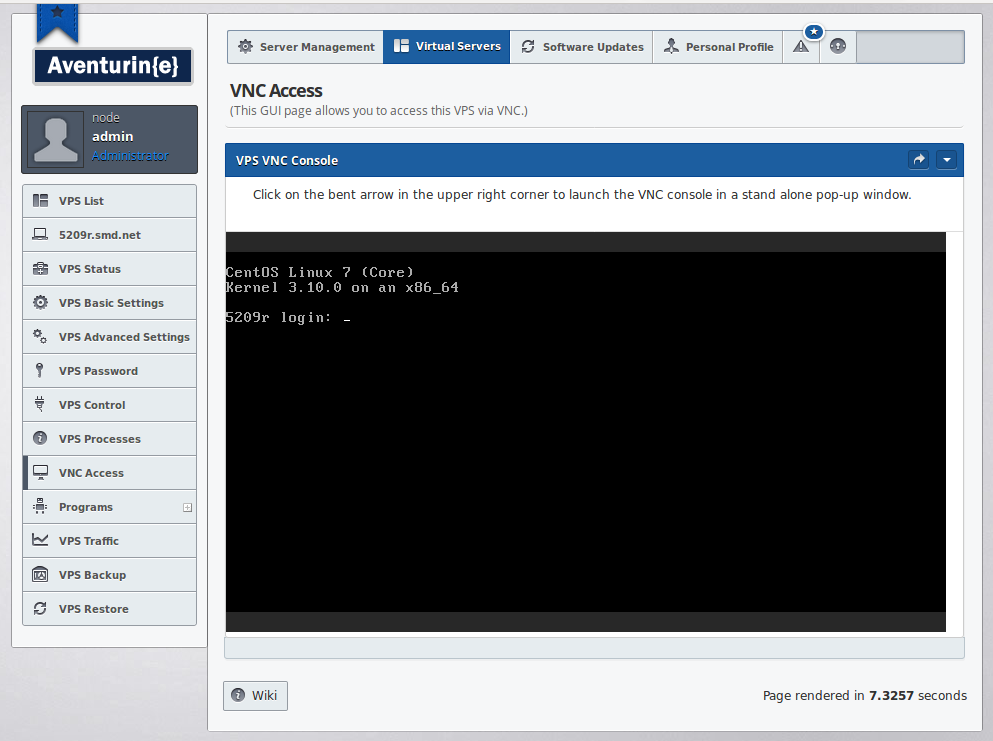
If your VPS has VNC access allowed and a VNC password set, then you can access the VNC console directly by connecting your favorite VNC client to the VNC port of this VPS on the 6109R node itself. But you can also use the GUI interface and use the built in HTML based noVNC client.
When you click on the blue bent arrow in the upper right corner the noVNC client is launched in a slightly bigger stand alone pop-up that can also be resized. In that case it might look like this:
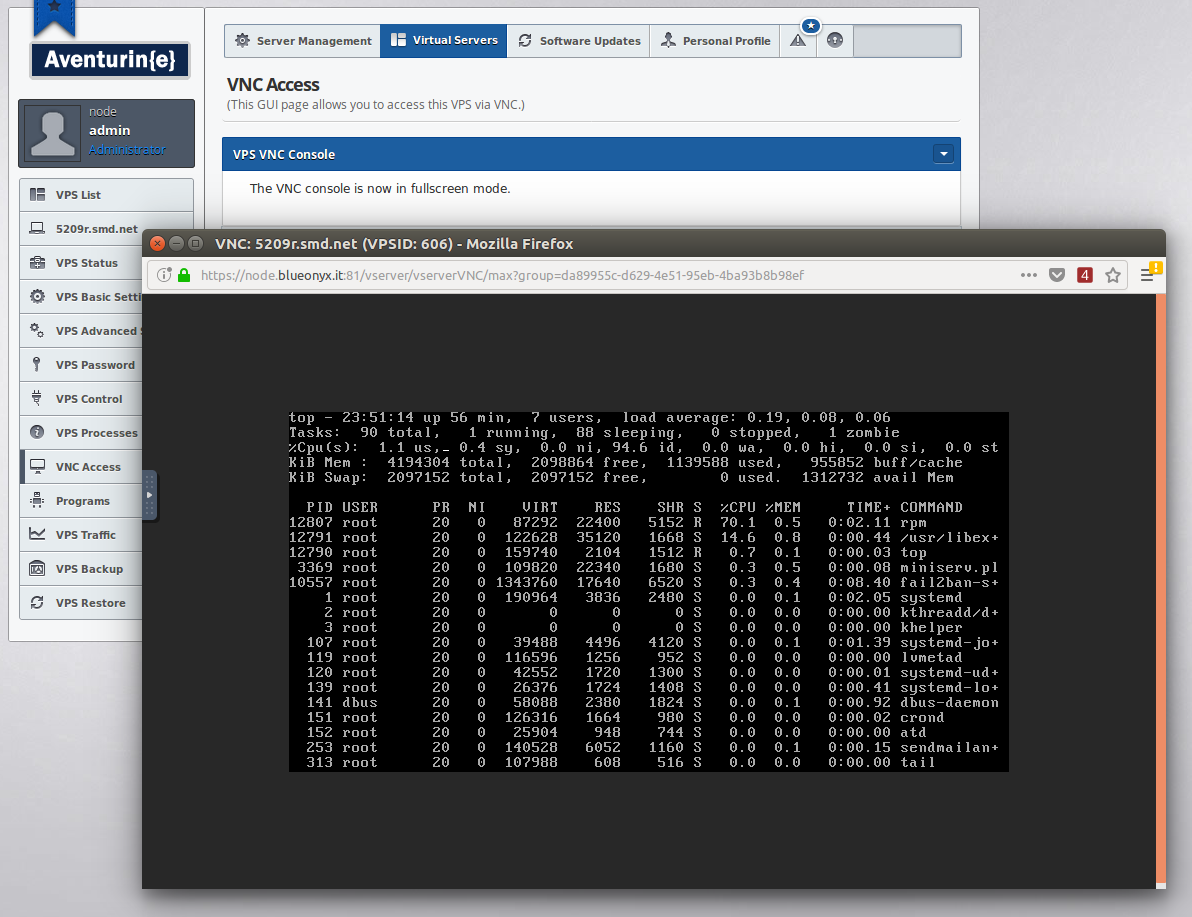
VPS Traffic
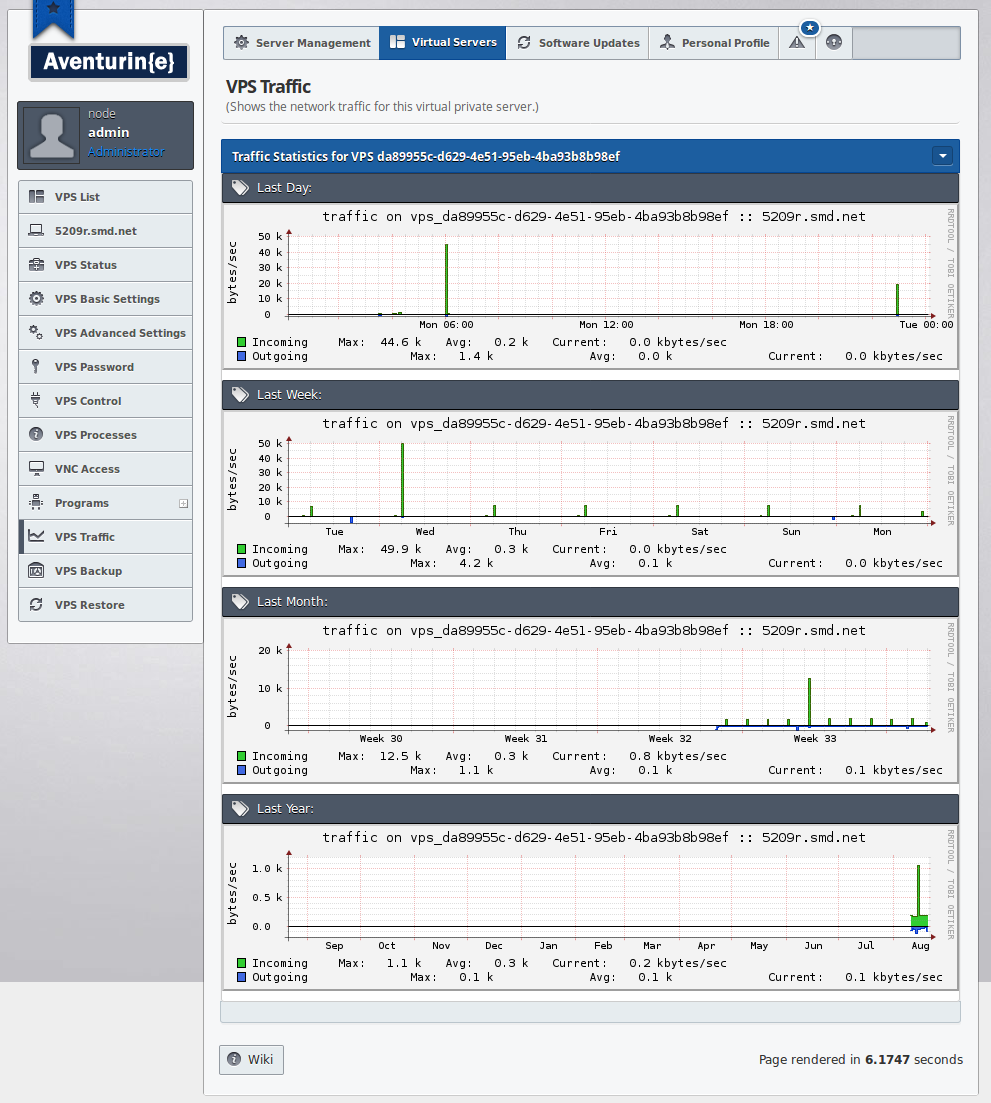
The menu item VPS Traffic shows you the network traffic statistics of your VPS for the last day, last week, last month and last year.
VPS Backup
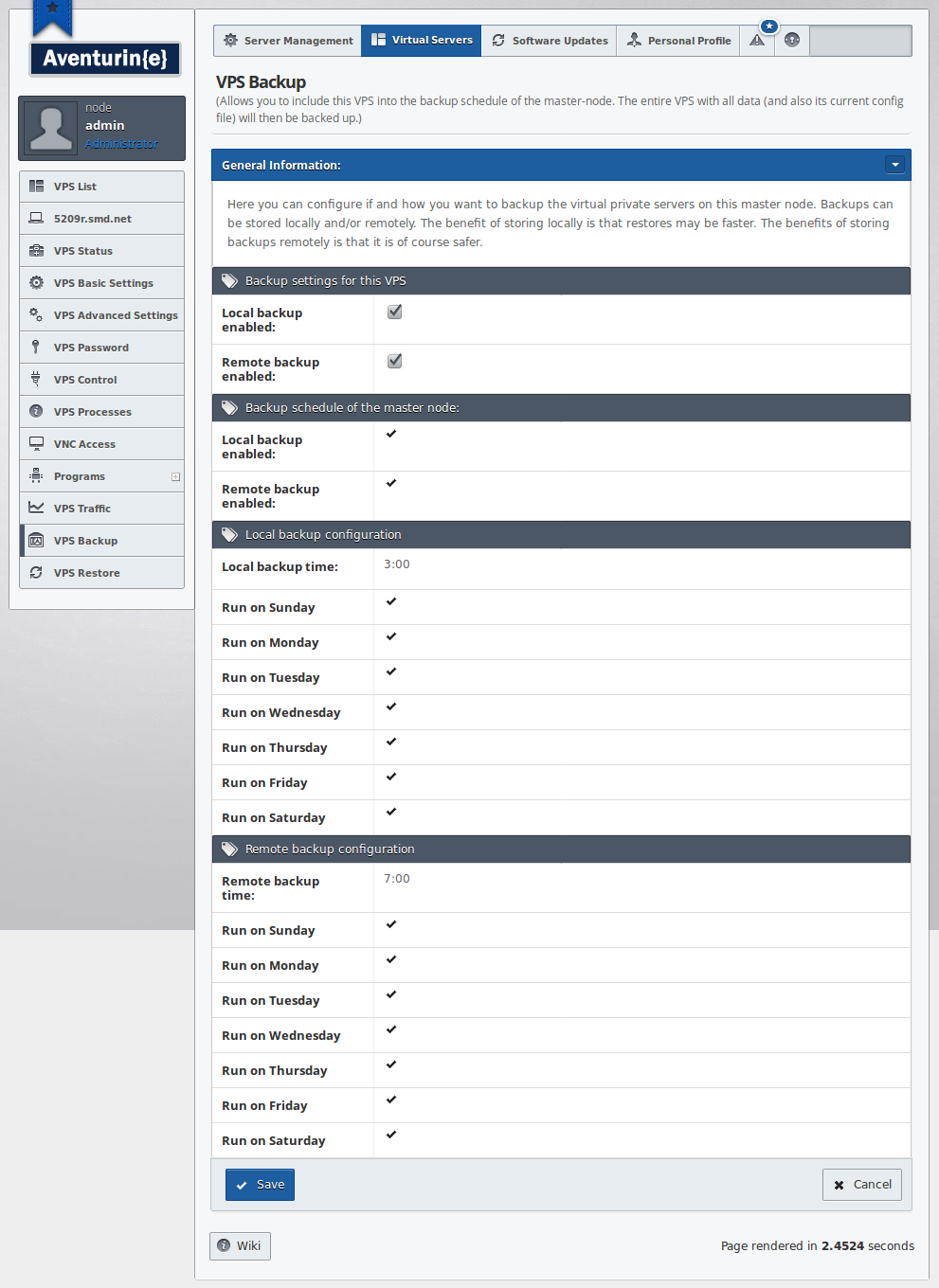
This page allows you to include your VPS into the daily local and/or daily remote backup scheme. Local and remote backup itself (where they store to and when they run) are configured under "Virtual Servers" / "Backup". The backup mechanism uses /usr/sausalito/sbin/vzpbackup.sh, which takes a snapshot of the VPS file area and then saves this snapshot and the VPS configuration in a tarball. Multiple generations of backups for the same VPS can be stored and each of those then has the date and timestamp in the filename.
As this isn't an incremental but a full backup you should be prepared to have enough space available to save the entire VPS data for as many generations as you would like to keep. As the ploop filesystem of VPS's is balooning, you won't need 100GB to store one backup of a container that is allowed to use 100GB. Instead if the container is currently using 40 GB, then you will need roughly 40GB to store one copy of the backup.
VPS Restore
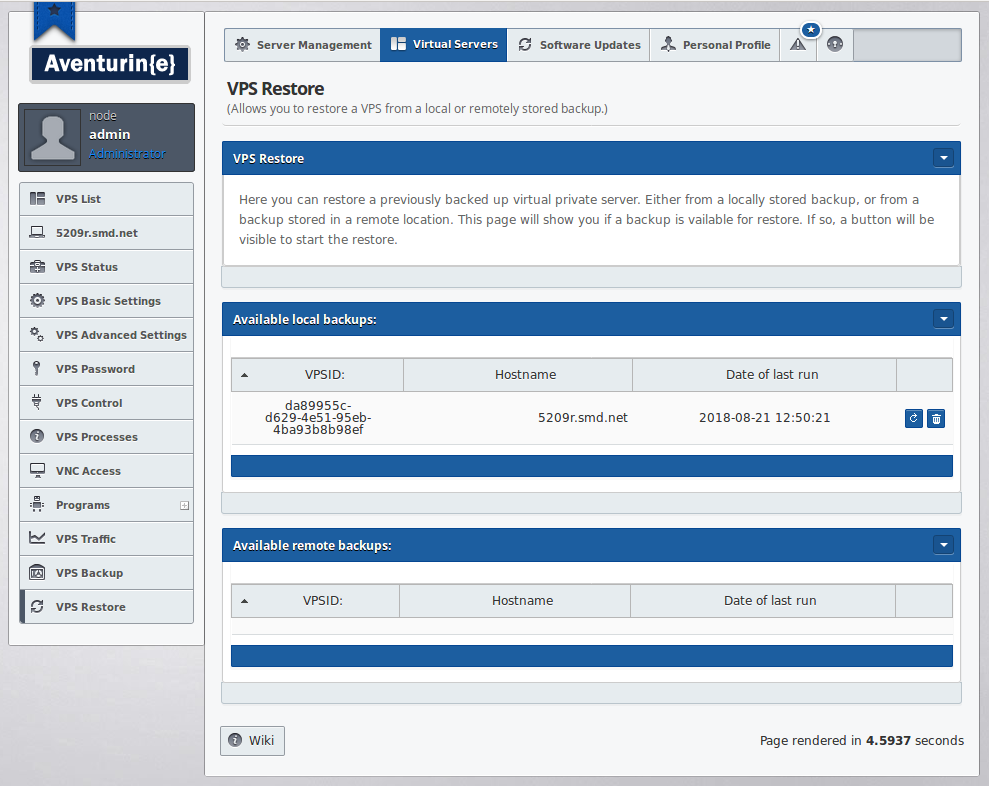
This page allows you to view which local and/or remote backups are present for your VPS's and you can choose to restore a backup or to delete a particular backup set.

